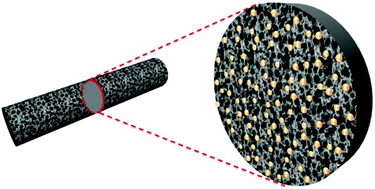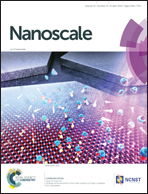Confined metal Ge quantum dots in carbon nanofibers for stable rechargeable batteries†
Abstract
As a promising alloy-type anode material for rechargeable batteries, the metal germanium (Ge) shows high capacity, but it suffers from a fast capacity fading problem caused by a large volume expansion during lithiation/delithiation cycles. In this study, via a facile electrospinning method, we optimized the combination structure of Ge quantum dots (QDs) and carbon nanofibers (CNFs). Specifically, Ge QDs with a diameter of 4–7 nm were highly dispersed in porous (pore size 10–150 nm) CNFs. The hybridized Ge/CNF nanocomposite exhibited remarkable Li storage performances such as high reversible capacity (1204 mA h g−1 at a current density of 200 mA g−1), high capacity retention (87.1% after 100 cycles) and excellent rate property (760 mA h g−1 at 3000 mA g−1). The improved electrochemical performance was due to the synergistic effects of Ge QDs and carbon nanofibers; this effectively alleviated the volume expansion problem, prevented the agglomeration of Ge, maintained the structural stability of the nanocomposite, and improved the electrode kinetics of diffusion of Li ions.



 Please wait while we load your content...
Please wait while we load your content...